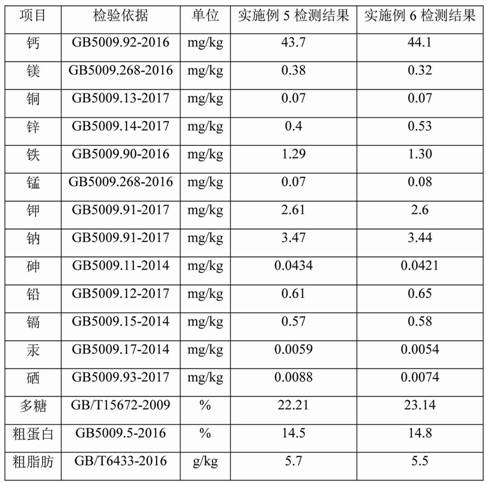Rose palmata, fruity mushroom and cultivation method thereof
A method for cultivating and a technique for rose ears, applied in the field of microorganisms, can solve the problems of inability to commercialize production and low yield, and achieve the effects of shortening the fruiting cycle, fast nutrient transformation, and simple operation.
- Summary
- Abstract
- Description
- Claims
- Application Information
AI Technical Summary
Problems solved by technology
Method used
Image
Examples
Embodiment 1
[0033] The separation and identification of embodiment 1 palmate rose ear
[0034] In August 2020, the inventor Tuligul collected the strain of Rosa palmatum in Shansongling, Jiaohe City, Jilin Province. After tissue isolation and culture, biological characteristics observation, detection and identification, it was determined to be the fungus of Rosa palmatum Silk, preserved in the General Microorganism Center (CGMCC) of the China Committee for the Collection of Microbial Cultures (CGMCC), the definition symbol is GGR-001, the address is No. 1, Beichen West Road, Chaoyang District, Beijing, China, the preservation number is CGMCC No. 21941, and the preservation date for April 2, 2021.
Embodiment 2
[0035] The cultivation of embodiment 2 test tube parent species
[0036]Wash and peel 200g of potatoes and cut into thin slices, add 1000mL of water to boil for 20min, filter with gauze, take the filtrate and make up water to 1000mL, add 22g of agar powder, 0.5g of magnesium sulfate, 0.8g of potassium dihydrogen phosphate, 2.5 of peptone g, 25g of glucose and 0.5g of vitamin B1 powder, heat again until the agar powder is fully melted and then put into test tubes, the amount of each test tube is 1 / 5 of the length of the test tube, after filling, put a sterile cotton plug or silica gel stopper, use plastic Seal the paper well, tie a bundle for every 7-10 test tubes, and tie them up with strings; then put them into a high-pressure steam sterilizer, heat to 100°C, discharge cold air, and heat again to a pressure of 0.1-0.12MPa (pot (injection temperature reaches 121°C) for 30 minutes. When the pressure drops to 0, slowly release the gas in the pot. When the culture medium is not s...
Embodiment 3
[0037] Embodiment 3 solid bacterial classification expansion culture bacterial classification
[0038] Including the following steps:
[0039] (1) Original seed culture: put 400g of sorghum solid medium in a 500mL glass container, cover with a sterile air-permeable film, sterilize at 118-122°C and pressure 0.12-0.14MPa for 90-120min, and wait for the inside of the bottle to cool When reaching 22-24 ℃, insert the parent species of the test tube of embodiment 2 under aseptic conditions, and the inoculum size is 10cm 3 The mother species of the test tube obtained in Example 3 was cultivated for 40 days at 20-22°C to obtain the original species;
[0040] The preparation method of the sorghum solid medium is as follows: adding quicklime to water at a temperature of 100° C. to adjust the pH value to 8.5, putting the sorghum into the water, submerging the top surface of the sorghum by 10 cm, boiling for 20 minutes until there is no white heart in the center of the sorghum, and then ...
PUM
 Login to View More
Login to View More Abstract
Description
Claims
Application Information
 Login to View More
Login to View More - R&D
- Intellectual Property
- Life Sciences
- Materials
- Tech Scout
- Unparalleled Data Quality
- Higher Quality Content
- 60% Fewer Hallucinations
Browse by: Latest US Patents, China's latest patents, Technical Efficacy Thesaurus, Application Domain, Technology Topic, Popular Technical Reports.
© 2025 PatSnap. All rights reserved.Legal|Privacy policy|Modern Slavery Act Transparency Statement|Sitemap|About US| Contact US: help@patsnap.com

